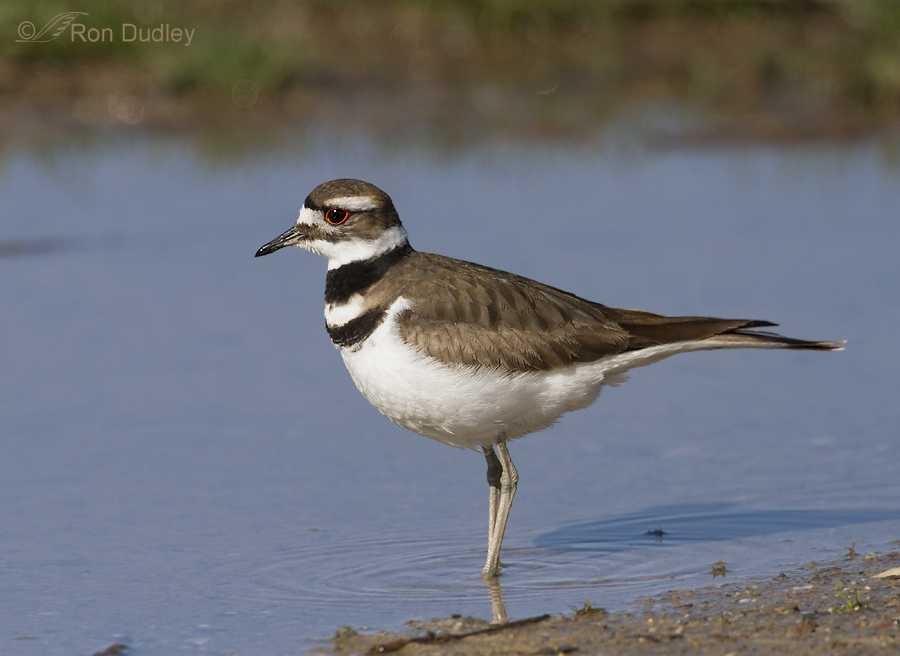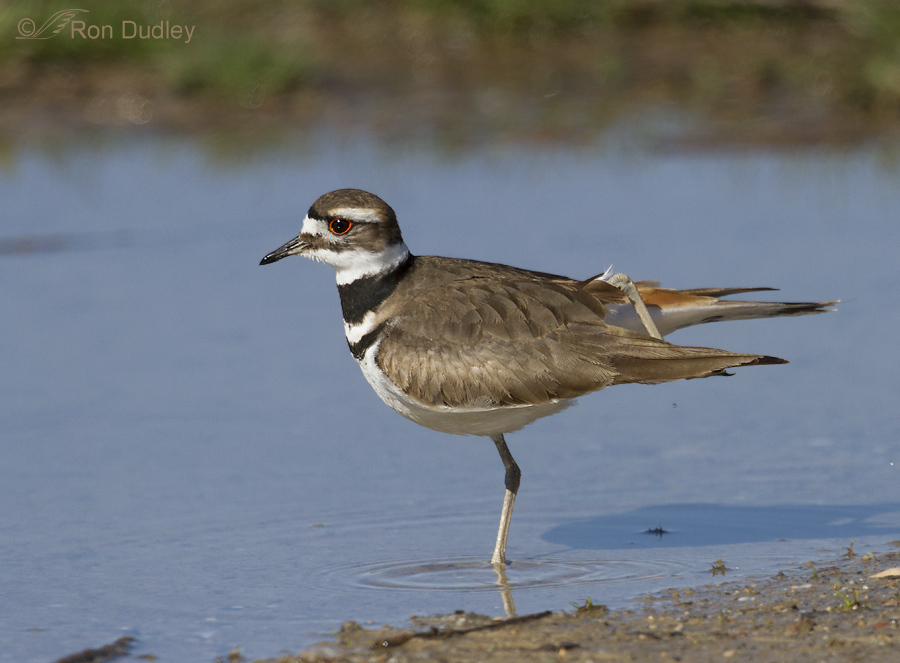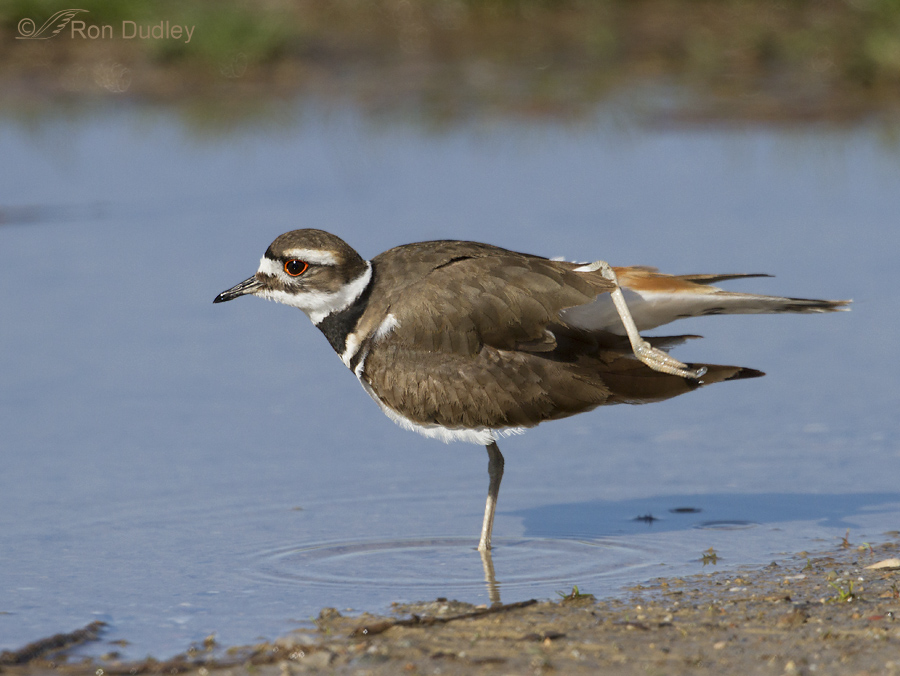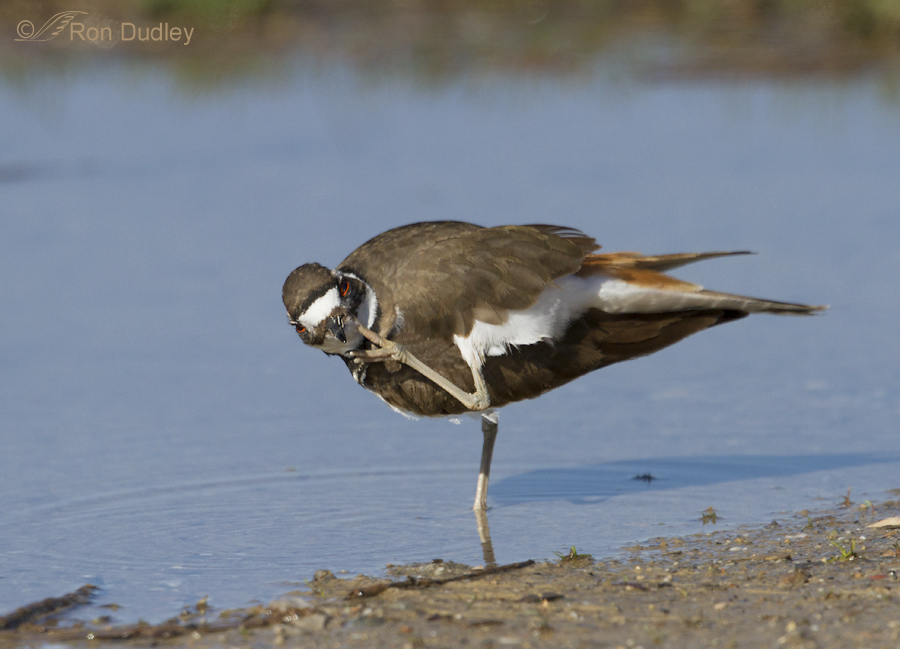“Little things” about bird behavior sometimes grab my attention and won’t let go.

1/3200, f/7.1, ISO 500, Canon 7D, Canon EF500mm f/4L IS II USM, 1.4 tc, not baited, set up or called in
Last week I photographed this Killdeer as it waded in a puddle at Farmington Bay. At the instant this photo was taken the bird already had an itch on its face that needed scratching…

1/3200, f/7.1, ISO 500, Canon 7D, Canon EF500mm f/4L IS II USM, 1.4 tc, not baited, set up or called in
so it lowered its wing so it could raise its leg above the wing primaries…

1/3200, f/7.1, ISO 500, Canon 7D, Canon EF500mm f/4L IS II USM, 1.4 tc, not baited, set up or called in
and then lowered the leg on the other side of the wing…

1/3200, f/7.1, ISO 500, Canon 7D, Canon EF500mm f/4L IS II USM, 1.4 tc, not baited, set up or called in
and proceeded to vigorously scratch the itch on the side of its face. The behavior is not unusual as I’ve seen it often in a variety of species.
But I have to rhetorically ask “why do they do it this way?”. Why go through all of these convoluted gyrations to get at the itch when it seems like they could simply raise their foot and scratch the itch without first rearranging their limbs in such a seemingly awkward and complicated manner. Go back and look at the first image again and see how easy it appears it would be to simply lower its head, raise its foot and scratch.
Maybe it has to do with biomechanics.
Human arms hang almost straight down from our shoulders close to the midline of our bodies and equidistant from the front and back so one might think that we could scratch an itch in the middle of our upper back as easily as we can on our sternum. But we cannot. The arrangement of bones, muscles and ligaments in our shoulders and arms gives us the ability to move our hands to the front of our bodies where our eyes can see what’s going on, at the expense of dexterity and flexibility behind us.
I wonder if something similar is the reason this Killdeer went through such complicated maneuvers to simply scratch an itch on its face. The scratching action is quick and repetitive and would require complex coordination of muscles and bones that may not be as efficient or forceful without assuming this unusual posture first. Of course, I’m only guessing…
Yes, when it comes to bird behaviors I do occasionally dwell on the mundane but little things like this make me curious. And after all, it’s the little things that add up to the complicated and fascinating critters we call birds.
Ron


I had to look at these pictures several times to figure out what was really going on. The whole process does seem quite contortionistic. I think I’m glad that scratching most itches is not quite so complicated for us humans.
http://i250.photobucket.com/albums/gg279/pebblebeachorbust/birds%202014/IMG_4213_zps9528e57b.jpg
That’s a pretty awful photo, but when I saw it I remembered this post and thought you might like to know that barn swallows do it that way too.
I think they are just showing off. For me, who is as supple as a brick, a pose like that would guarantee a face plant.
And, more seriously, thank you. Behaviour is always fascinating and this series captures it sooooo well.
It looks like Dick, Deb and Dawna may be on the right track.
My Facebook friend Christine Bogdanowicz out of Cornell University sent a link to this post to a noted professor of biology and asked him his thoughts on the subject. To summarize what he said (he went into more detail than this), he thinks it’s likely a matter of balance – lowering the wing lowers the center of gravity and moves it over the supporting foot, making it easier to maintain balance on one foot during such a vigorous process as scratching.
Thank you Christine. And Dr. Fish.
It’s the little things that make the subject so fascinating. Love these images and your shots of Killdeer are so wonderful!
There is an essay on this subject in The Birder’s Handbook: A Field Guide to the Natural History of North American Birds
by Paul R. Ehrlich, David S. Dobkin, Darryl Wheye. I don’t remember who wrote the essay and don’t have my copy with me, but the author referred to “under wing scratchers” and “over wing scratchers.” If memory serves, birds either scratch their heads one way or the other depending upon the species. I don’t remember now if he touched on a theory of why this is, but it was fascinating reading.
I love this book. It’s old now (I think from the late ’90s) and we have much new info with the advances in DNA, but it’s still a wonderful book with lots of really interesting essays and detailed information about each species that includes nesting habits, clutch size, preferred food, etc.
That sounds like my kind of book, Sharon! I think I’ll look for it. I’m familiar with some of the work of Dr. Erlich (The Population Bomb, ZPG etc) and was an early admirer of his.
perhaps it’s a matter of balance … the form and function of yoga
excellent photos, as usual!
many thanks, dawna
SF
Dawna, when I was thinking about this yoga actually came into my mind several times…
Interesting… does it repeat the range of motions when it finishes scratching in order to resume its 2-legged stance? I’m wondering if raising its leg above the wing primaries frees up the range of motion by ‘unhitching’ it from some stabilizing inner structure… Hmm!
Good question, Alison. I would think it would have to but to be honest I didn’t noticed and didn’t get any pics of it.
I’m with Dick, I think it might be balance too. Haven’t seen a Killdeer here in Central Montana yet, but the Meadowlarks, Harriers & Kestrels have arrived.
Deb, glad to know some of your birds are returning. Won’t be long until I’m up there again looking for birds, raptors especially.
How about balance? If you look at where most of the weight is on Killdeers, it is in front and if he raised his leg to scratch an itch would he fall forward? Maybe as birds develop, certain behaviors become apparent because of trial and error over time. It seems awkward to us, but maybe to the bird it was the only way he could scratch without falling over. Great pictures – I almost want to grab a piece of wood and start carving. VBG. Just my two cents.
It’s certainly possible, Dick. I just don’t know. I always appreciate your “two cents”!
After reading your observations, I wonder if all Killdeer do that or is it this particular bird?
Great shots, BTW.
I don’t know, Ann. And if they do, do they do it all the time? I’ve noticed other long-legged species do this but I’ve seen songbirds do it too.
Fascinating! I’ve seen hummingbirds scratch their itches, but they lift their feet directly. Not too surprising given how short their legs are and how small their feet. But I mostly see Anna’s, Black-chinned, and Allen’s.
Great shots and interesting observations.
Charlotte
Thanks, Charlotte.